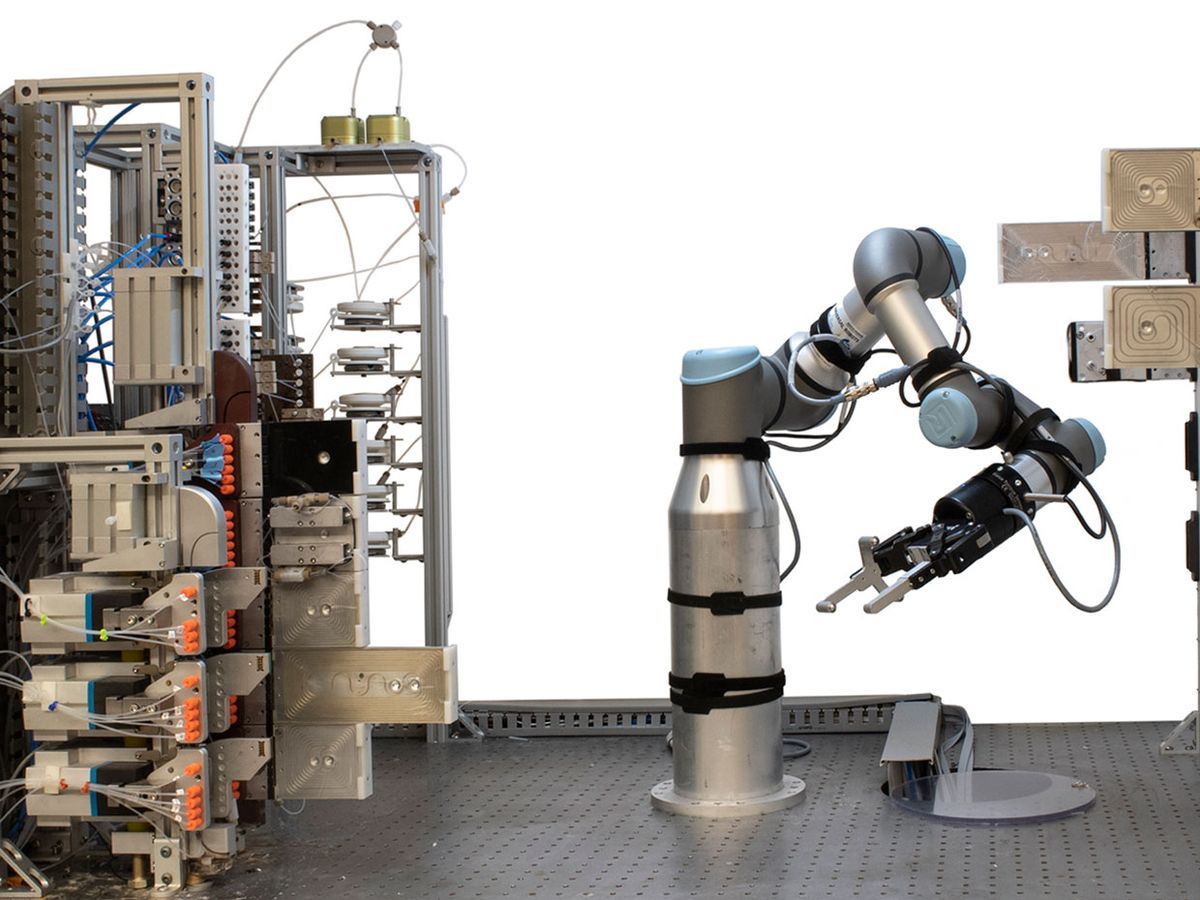The chemistry lab bench just took a step into the automated future. A team of engineers in the United States and Belgium has pioneered a new AI-powered, robotic system for developing molecules. The system uses smart algorithms to comb through millions of known reactions to discover the best way to create a pharmaceutical molecule, polymer, or other compound.
A robotic arm and automated system of pumps, valves, and vessels then takes over to synthesize the molecule without the aid of human hands. Humans are, however, still “in the loop,” the researchers note. No AI system can yet match the guidance of a good chemical engineer in deciding which reactions to avoid. (Wildly exothermic reactions that go “boom” being just one of many undesirable outcomes that a human chemist can help prevent.)
“[We] have a system that can learn what’s been done before and use that to instruct the robot to actually execute the synthesis,” says Klavs Jensen, professor of chemical engineering and materials science at MIT.
Jensen says that using a robotic arm and a standardized system of reactor vessels, and hoses to connect them, simplifies the process. A human operator running a comparable system with the same broad range of possible chemicals and reactions would need to operate some 77 valves—each of which would need to be monitored for clogging or leaking.
This robotic chemistry synthesis system, Jensen and his co-authors say, promises to remove some of the drudge work from the chemical R&D process. Their system "reliev[es] expert chemists of manual tasks so that they may focus on new ideas," the researchers report in a recent issue of the journal Science.
Tim Jamison, co-author and MIT professor of chemistry, says this open-source robotic synthesis system also sets a precedent.
“Every new molecule that I can think of in the history of mankind was initially made by someone in the laboratory using glassware—or something very close to that,” Jamison says. Making molecules with a robotic system, he says, is something different.
Jamison noted that their research did not synthesize any new molecules. That was, in fact, partly the point.
“The aim of the project was not necessarily to make something better, faster, cheaper,” he says. “It was to develop a system that would have a higher degree of automation. The system did not invent any molecules. Every single [one of the] target molecules we made were all known compounds.”
The group’s paper reports on the robotic platform’s success in synthesizing 15 pharmaceutical compounds, including aspirin and the blood pressure medication quinapril, as well as the anesthetic lidocaine and the benzodiazepine diazepam.
Pharmaceuticals are not the only compounds this robotic system can synthesize, though. “It could also have been used to make dyes for LEDs,” Jensen says. “It could have been used to make quantum dot materials, though we would have worked to get to higher temperatures. But I think we could have done that. I think perovskites, you could synthesize. There’s also a lot of interest in polymers for electronic and mechanical devices. Those often require unique molecules. So they’re thinking about making new monomers for those applications—and you could make those monomers with this system.”
Jamison says he’s already fielded requests from labs and companies for this as-yet-unnamed new robotic chemical synthesis platform.
“I’ve received emails with questions along the lines of ‘Looks great, I want one,’” he says. “Unfortunately we’re not able to provide systems to those who are interested. But it certainly has captured the imagination of a number of people.”
Margo Anderson is senior associate editor and telecommunications editor at IEEE Spectrum. She has a bachelor’s degree in physics and a master’s degree in astrophysics.



